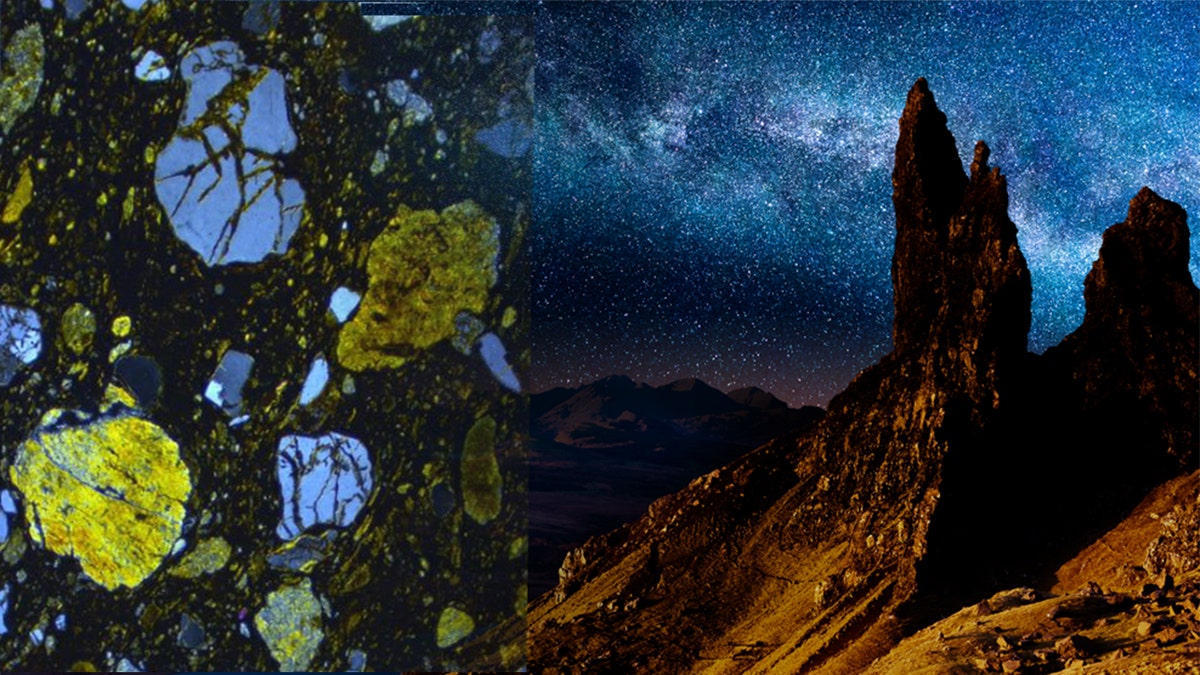
Thin section view of meteoritic ejecta deposit (Credit: Simon Drake), file photo of the Old Man of Storr, Skye, Scotland, at night (Peter Burnett/iStock)
Scientists have discovered ‘alien’ minerals at the site of a prehistoric meteor strike on Scotland’s remote Isle of Skye.
Geologists from Birkbeck, University of London, were part of a team examining volcanic rocks on Skye when they spotted mineral forms from a meteor impact that have never been found on Earth before.
Specifically, the team found osbornite, which had previously been collected as space dust on a NASA mission. Initially, the scientists thought that they were looking at a volcanic flow deposit called ignimbrite but when they used an electron microprobe they found the rare space material.
POLICE DASHCAM CAPTURES STUNNING FOOTAGE OF FIREBALL STREAKING ACROSS THE SKY
"When we discovered what it was we were very surprised, and it was a bit of a shock because we were not expecting that," explained Dr. Andy Beard, a lecturer at Birkbeck’s Department of Earth and Planetary Sciences, in a statement.
The researchers were examining the base of a 60-million-year-old lava flow when they discovered the osbornite. Because the mineral form was unmelted, it is likely to be an original piece of the meteorite, according to the geologists.
The area where the discovery was made is steep and very boggy, which may have deterred previous researchers from exploring the site, according to Dr. Simon Drake, associate lecturer at the Department of Earth and Planetary Sciences. “We were sinking in up to our thighs. I distinctly recall saying to Andy Beard, ‘this had better be worth it.’ It was worth it,” he said, in the statement.
SCIENTISTS 'GOOGLED' DATA FROM NASA'S KEPLER SPACE TELESCOPE TO DISCOVER NEW PLANET
Experts say that the find raises questions about where the meteorite hit and whether its impact triggered an outpouring of volcanic lava that started at the same time.
A second site 4.3 miles away also revealed the same unusual mineral makeup in what is known as ‘ejecta’ – material ejected from a crater.
The scientists’ findings have been published in the journal GeoScienceWorld.
Follow James Rogers on Twitter @jamesjrogers
